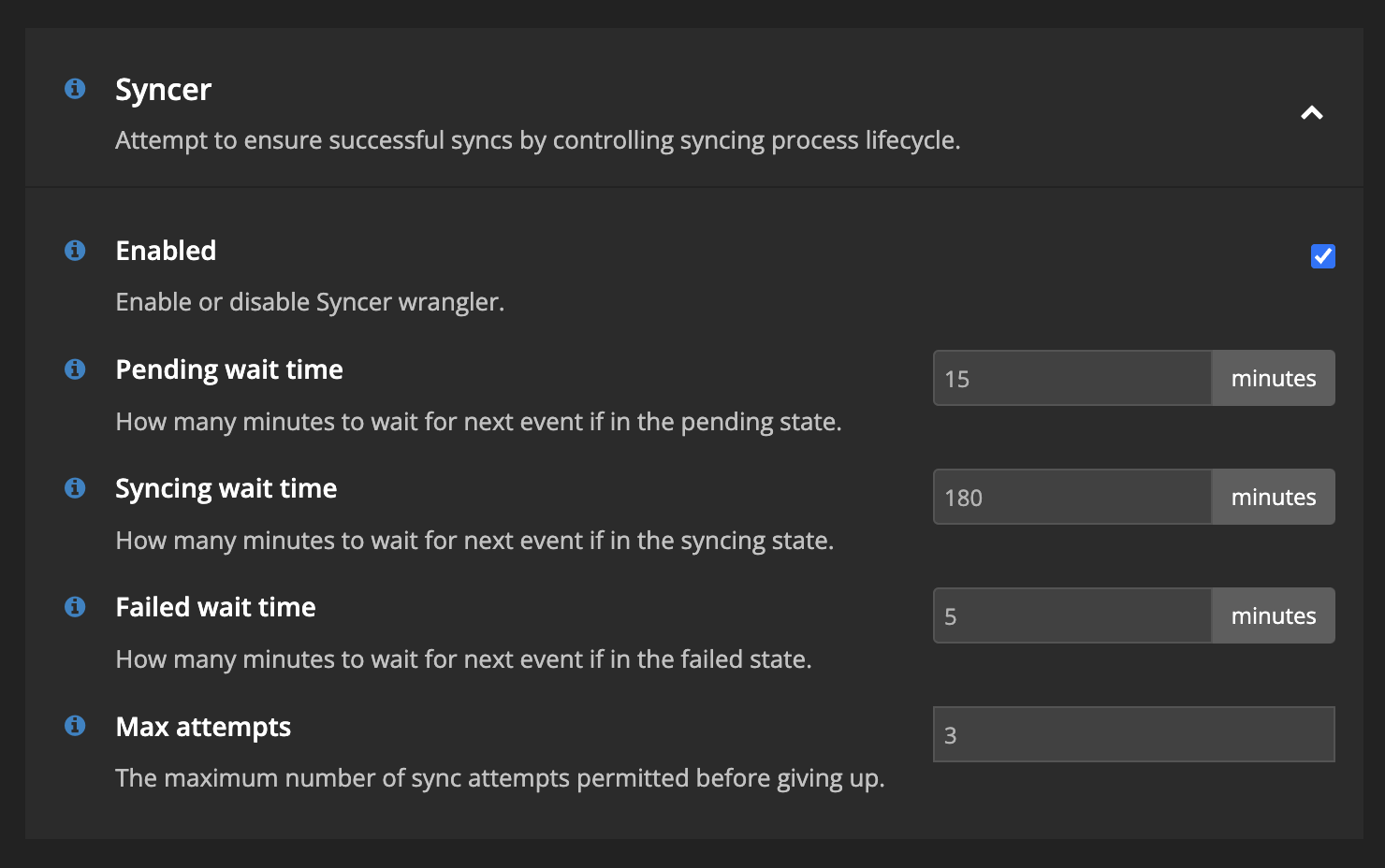Virtual Wrangler Reference¶
Beta
This feature is currently in BETA. We're interested in hearing your feedback. Please direct all feedback to support.
Overview¶
Virtual Wrangler is an automated event system that watches over jobs and performs actions on your behalf. This page is a comprehensive reference for all Virtual Wrangler settings. If you are new to Virtual Wrangler, see the Virtual Wrangler tutorial for an overview.
Wranglers¶
MaxTask Runtime Wrangler¶
This wrangler monitors individual tasks. It attempts to kill or retry a task that exceeds the value of Max runtime.
You can set the value in one-hour increments with a minimum of one hour. The clock starts when the task enters a running state.

Relocation Wrangler¶
This wrangler monitors at the job level. It relocates the entire job to a different cloud region if it cannot start within the specified time. It selects a new cloud region based on the best availability to meet the job's resource requirements.
This wrangler acts only on jobs with a priority that meets or exceeds the given threshold.
Administrators may set the Max Wait Time in minute increments, with a minimum of 90 minutes and a default setting of 360 minutes.
If a job includes numerous large assets or many files, syncing or resyncing may require significant time. Consider this when configuring the Max Wait Time parameter.

Spot To On-Demand Wrangler¶
This wrangler monitors individual tasks. It switches the instance used by a task from spot to the on-demand equivalent. It keeps the CPU, memory, and GPU specification, and it stays in the same geographical cloud region.
Note
Only Google Cloud Platform (GCP) and Amazon Web Services (AWS) offer spot instances; therefore, this wrangler appears only for accounts using GCP or AWS clouds. Refer to our pricing calculator to understand cost differences.
Switching to an on-demand instance increases the likelihood of availability in the chosen cloud but incurs a higher cost per core hour.
This wrangler acts only on jobs with a priority that meets or exceeds the given threshold.
Administrators may set the Wait Time in minute increments, with a minimum of 90 minutes and a default setting of 120 minutes.

Syncer Wrangler¶
This wrangler monitors at the job level. It handles the lifecycle of the syncing process when enabled.
Note
Review the lifecycle of job to understand when this wrangler performs actions.
Syncing is the process of mapping uploaded files to filesystems used by the render nodes. This wrangler allows for control over the different states that occur during a sync.
| State | Default (minutes) | Minimum (minutes) | Description |
|---|---|---|---|
| sync_pending | 15 | 1 | Syncing has not yet begun but is currently queued. |
| syncing | 360 | 5 | Actively downloading objects from object storage to disk. |
| sync_failed | 6 | 1 | Failed to start syncing or the syncing process failed. |
| Field | Default | Minimum | Description |
|---|---|---|---|
| Max Attempts | 3 | 0 | How many attempted actions to perform before the wrangler exits. |

In the above example, the wrangler will resync a job if it is in the following states:
- sync_pending for longer than 15 minutes.
- syncing for longer than 180 minutes.
- sync_failed for longer than 5 minutes.
It will attempt three resyncs before exiting.